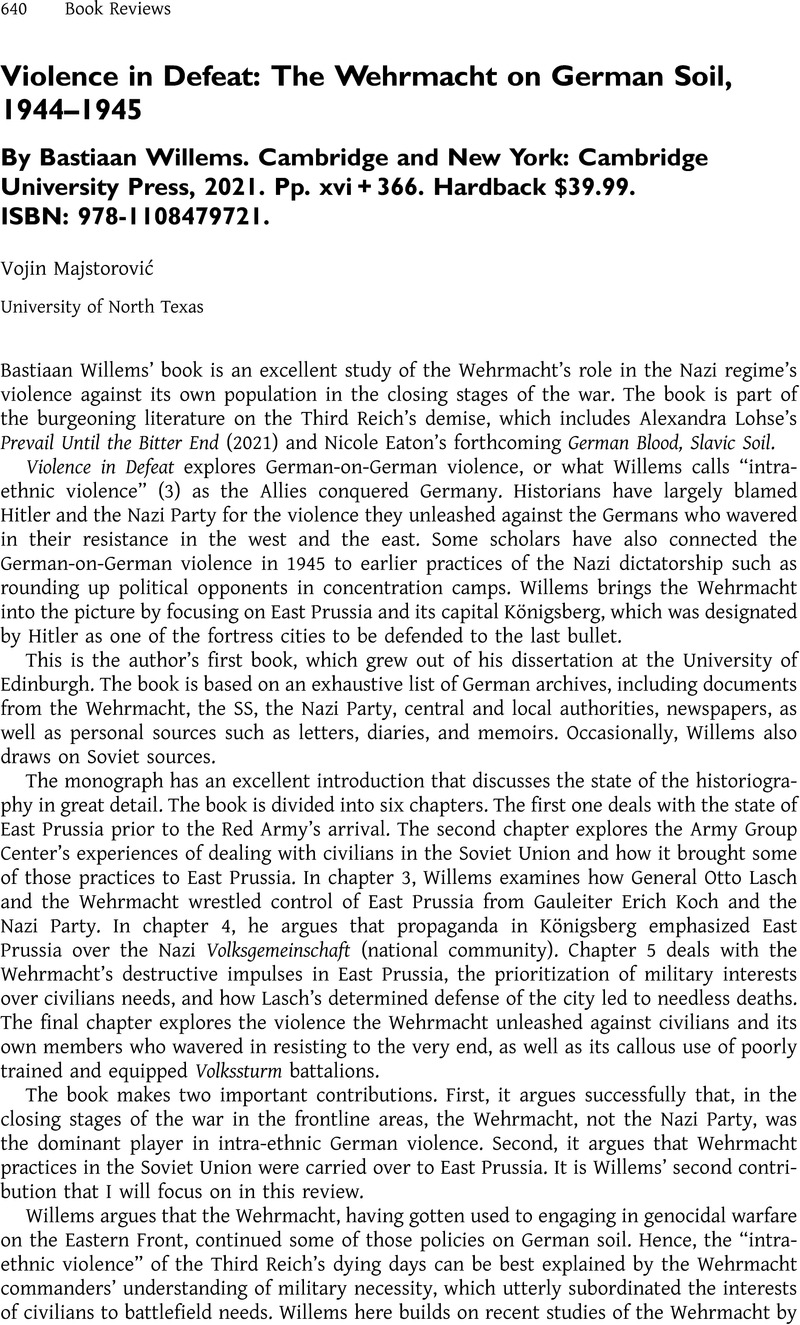No CrossRef data available.
Article contents
Violence in Defeat: The Wehrmacht on German Soil, 1944–1945 By Bastiaan Willems. Cambridge and New York: Cambridge University Press, 2021. Pp. xvi + 366. Hardback $39.99. ISBN: 978-1108479721.
Review products
Violence in Defeat: The Wehrmacht on German Soil, 1944–1945 By Bastiaan Willems. Cambridge and New York: Cambridge University Press, 2021. Pp. xvi + 366. Hardback $39.99. ISBN: 978-1108479721.
Published online by Cambridge University Press: 05 January 2023
Abstract
An abstract is not available for this content so a preview has been provided. Please use the Get access link above for information on how to access this content.

- Type
- Book Review
- Information
- Copyright
- Copyright © The Author(s), 2022. Published by Cambridge University Press on behalf of Central European History Society of the American Historical Association


